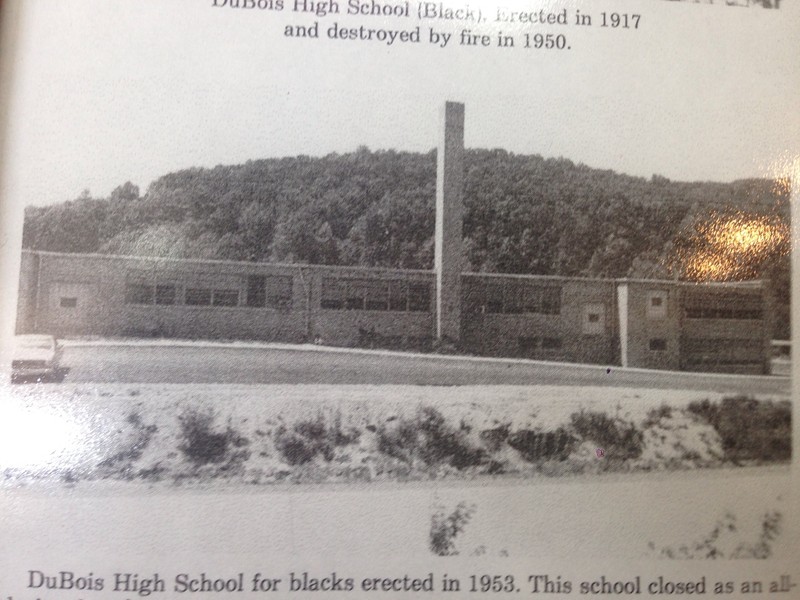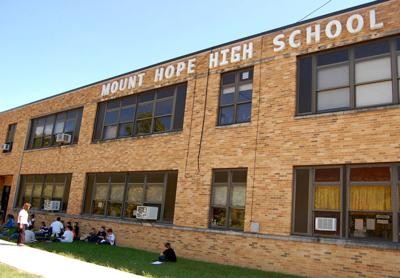DuBois High School (1954-1956) Mt. Hope High School (1956-2011)
Introduction
Text-to-speech Audio
Images
Mt. Hope High School, originally DuBois High School.

The school closed in 2011.

Backstory and Context
Text-to-speech Audio
In 1954, the United States Supreme Court unanimously declared that segregated public school facilities violated the 14th Amendment to the United States Constitution. Despite a 1955 Supreme Court declaration that required school boards to integrate “with all deliberate speed,” integration proceeded slowly in states like West Virginia while many other southern states met attempts to comply with the law with violent resistance.
DuBois High School was an African American high school in Fayette County prior to integration. The desegregation of DuBois High School was unlike any other in the state of West Virginia because it was decided that the white high school would close and white students would be integrated into the recently-constructed African American high school.
Prior to the completion of this building in 1954, Mount Hope's DuBois High School was a modest eight-room schoolhouse that lacked many of the facilities enjoyed by white teachers and students. For example, the school had only one microscope and did not have a cafeteria. Despite these challenges, DuBois High School enjoyed some advantages owing to the sense of community and faculty with advanced degrees. The school continued its tradition of academic success, even during the years between 1950, when a fire destroyed the school, and 1954, when this school opened. In that interim, classes were held in a variety of churches, storefronts, and even personal homes.
Scholars that have written about desegregation in West Virginia have largely agreed that integration proceeded more smoothly in the Mountain State than most Southern states, especially after court decisions and legislation was enforced. It is important to note that most scholarly works written about integration in West Virginia are written by white men with the exception of experts like Dr. Ancella Bickley.
DuBois High School in Mt. Hope remains one of the most intriguing stories of racial integration in the state of West Virginia. The story of DuBois has been preserved largely through the efforts of Jean Evansmore, a former DuBois student and the curator of the DuBois on Main museum. “White people are surprised at information today that Black people have known for years when it comes to the African American history in this county. That’s because the whites wrote our history for us, and disregarded our attempts at preserving our story here.”[1]
Evansmore attended two years of segregated DuBois High School and two years of integrated Mt. Hope High School. The idea for the DuBois on Main Museum was created during a late 90’s reunion for all classes of DuBois High School. Since then, a collection of newspapers, articles, pictures, and other unique memorabilia has been donated and is now displayed in this museum for the preservation of DuBois High School history as well as African American history in Fayette County.
After Mount Hope High School graduated its last class in 2011, local students were transferred to nearby Oak Hill High School. The former school now serves as a community center and the history of the school is commemorated by a historical marker and exhibits at the DuBois on Main Museum.
Sources
Ancella Bickley, To Be Black in Fayette… (Personal Manuscript.)
Kuykendall, Taylor. Mount Hope High to close, The Fayette Tribune. January 18th 2011. Accessed May 25th 2021. https://www.fayettetribune.com/news/local_news/mount-hope-high-to-close/article_e135613e-2fcd-50e7-b8ee-28981b70e44f.html.
[1] Oral history of Jean Evansmore, other DuBois High School students, and family members of those students.
Paul F. Lutz, From Governor to Cabby (The Political Career and Tragic Death of West Virginia’s William Casey Marland: 1950-1965) (Huntington: Marshall University Library Associates. 1996).
Keenan, Steve. The Fayette Tribune. Accessed May 25th 2021. https://www.fayettetribune.com/news/local_news/mount-hope-high-to-close/article_e135613e-2fcd-50e7-b8ee-28981b70e44f.html.
